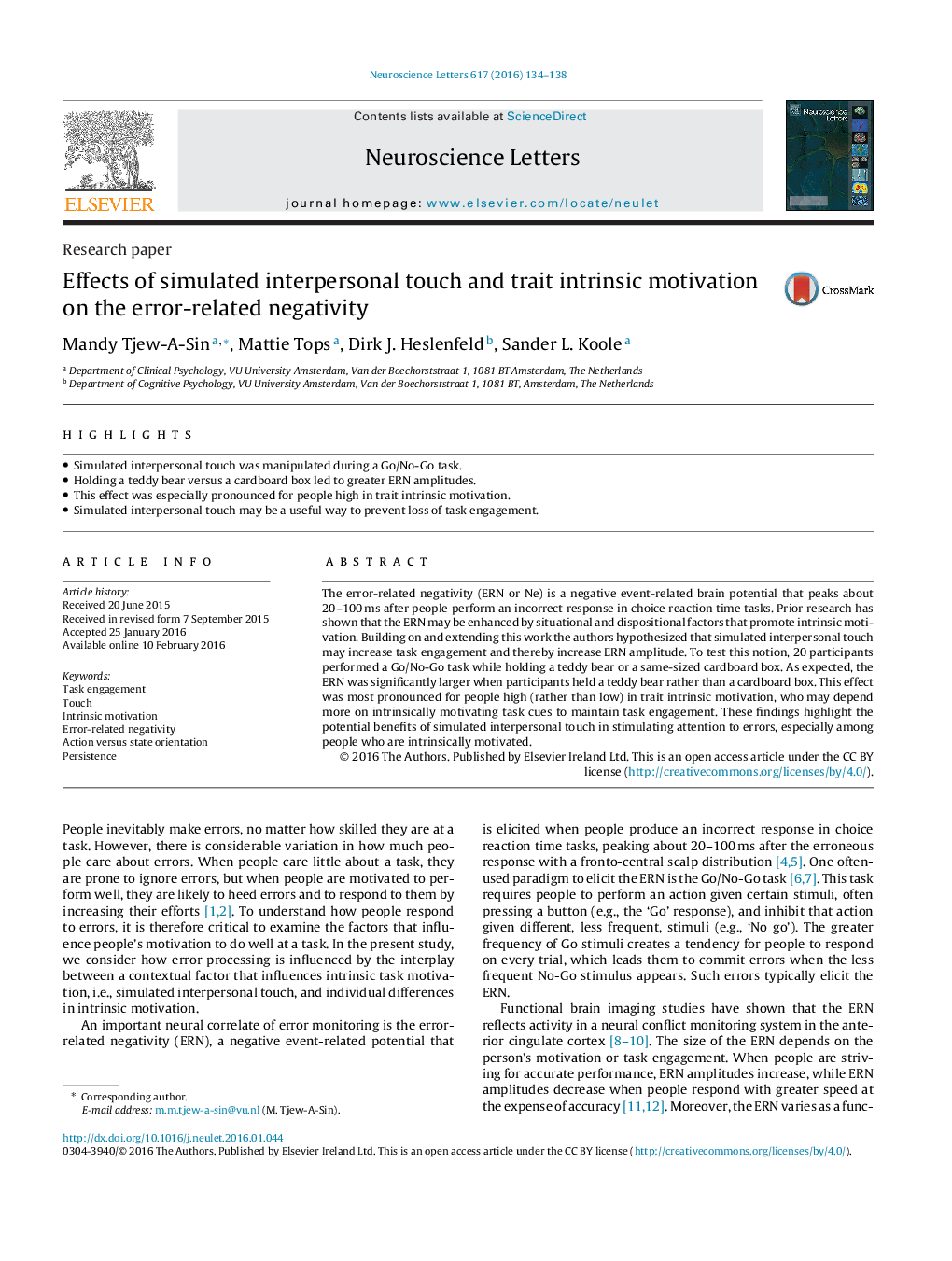| کد مقاله | کد نشریه | سال انتشار | مقاله انگلیسی | نسخه تمام متن |
|---|---|---|---|---|
| 6279934 | 1615082 | 2016 | 5 صفحه PDF | دانلود رایگان |
- Simulated interpersonal touch was manipulated during a Go/No-Go task.
- Holding a teddy bear versus a cardboard box led to greater ERN amplitudes.
- This effect was especially pronounced for people high in trait intrinsic motivation.
- Simulated interpersonal touch may be a useful way to prevent loss of task engagement.
The error-related negativity (ERN or Ne) is a negative event-related brain potential that peaks about 20-100Â ms after people perform an incorrect response in choice reaction time tasks. Prior research has shown that the ERN may be enhanced by situational and dispositional factors that promote intrinsic motivation. Building on and extending this work the authors hypothesized that simulated interpersonal touch may increase task engagement and thereby increase ERN amplitude. To test this notion, 20 participants performed a Go/No-Go task while holding a teddy bear or a same-sized cardboard box. As expected, the ERN was significantly larger when participants held a teddy bear rather than a cardboard box. This effect was most pronounced for people high (rather than low) in trait intrinsic motivation, who may depend more on intrinsically motivating task cues to maintain task engagement. These findings highlight the potential benefits of simulated interpersonal touch in stimulating attention to errors, especially among people who are intrinsically motivated.
Journal: Neuroscience Letters - Volume 617, 23 March 2016, Pages 134-138
